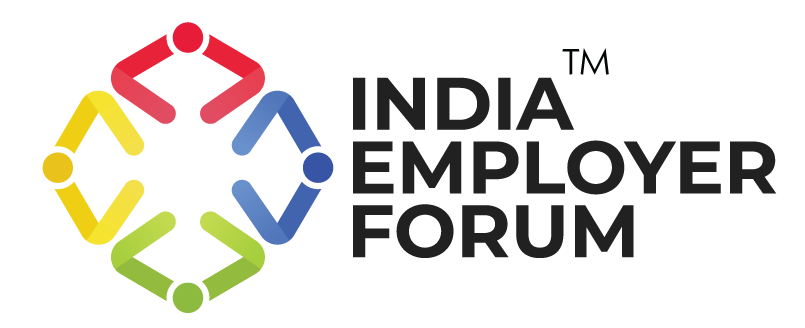As India sets its sights on becoming a global hub for skilled professionals, an urgent question persists—are our universities preparing students for the realities of the rapidly evolving job market? As emerging technologies like artificial intelligence, blockchain, quantum computing, and climate tech reshape global industries, the capacity of higher education to equip students with relevant, future-ready skills becomes more crucial than ever.
Encouragingly, several structural reforms are underway. Leading industry professionals are increasingly being involved in curriculum design. Faculty development is no longer optional—it’s mandated. National policies, like the National Education Policy (NEP) 2020, emphasize adaptability, skill orientation, and lifelong learning. However, despite the visible progress, we must ask: Do we have the depth, scale, and urgency to match the speed of global transformation?
Curriculum Reform: Industry Engagement on the Rise
India has seen increasing involvement of senior technology professionals in reshaping educational content, particularly in STEM disciplines. Institutions like AICTE and various state technical universities have invited leaders from companies like TCS, IBM, and Intel to participate in curriculum reviews and updates. For example, at AKTU (Dr. A.P.J. Abdul Kalam Technical University), alumni working in global firms are contributing directly to the syllabus development process.
In total, several hundred to a few thousand industry experts are actively involved in curriculum-related efforts each year across various institutions. This integration of real-world expertise is promising, but largely concentrated in Tier 1 institutions and select state universities. The bulk of India’s 40,000+ colleges still operate with outdated content and pedagogical models, with little flexibility or industry collaboration.
Faculty Upgradation: A Mandate, but Depth and Opportunities Matter
The role of the educator is central to building a future-ready workforce. The University Grants Commission (UGC) mandates that faculty participate in structured programs such as Faculty Induction Programmes (3–4 weeks) and Refresher Courses (2 weeks every 3–5 years) to qualify for promotions. AICTE also encourages technical faculty to pursue training through initiatives like ATAL FDPs and NITTT modules. Many institutions have adopted these programs, and around 60% of college faculty reportedly engage in some form of upskilling, ranging from MOOCs to short-term workshops.
More significantly, UGC policies also include provisions for paid sabbaticals—a powerful tool for long-term professional growth. Eligible professors (with 7+ years of service) can take up to 1 year of sabbatical leave, with a cap of 2 years during their career, all while receiving full salary and benefits. This is intended to allow deeper research, international exposure, or academic collaboration.
However, in practice, these sabbaticals are grossly underutilized. According to a 2019 UGC panel led by Prof. P. Balaram, only 50–100 mid-career sabbaticals are being supported annually across India—a minuscule number compared to the tens of thousands of eligible faculty. Institutions often cap sabbatical leave to 10–20% of department strength, and the approval process is often bureaucratically slow and arbitrarily enforced. A case in point is Jawaharlal Nehru University (JNU), where faculty sabbatical approvals have been delayed or denied despite eligibility, prompting legal interventions and protests by the JNU Teachers’ Association. While the policy framework is generous, access remains limited to a privileged few, usually in well-funded or centrally administered institutions. India’s higher education reforms show promise, but the path to true transformation requires a shift in mindset—from compliance to competence.
Faculty Development Must Become a Strategic, Incentivized Pursuit
Today, faculty development is often driven by the need to fulfill promotion criteria. To be effective, it must be treated as a strategic career investment. Institutions should actively support educators who go beyond the minimum to acquire high-demand tech skills, engage with industry, or develop innovative teaching approaches. Offering sabbaticals, research grants, and public recognition for such efforts can inspire a culture of lifelong learning among teachers. However, such measures must be made widely accessible—not just available in theory, but actively supported in implementation.
Curriculum updates in most Indian universities still follow a three- to five-year cycle. In a fast-moving technological world, this pace is inadequate. Instead, course updates should be continuous, with active input from industry professionals, recent alumni, and educators with hands-on expertise. Institutions must build agile review systems and make use of modular content from platforms like NPTEL and SWAYAM to stay current. Agility, not rigidity, should define curriculum development.
The Road Ahead: From Compliance to Competence
We must move beyond input-based metrics—like the number of FDPs attended—and focus on real-world outcomes. Are students employable in high-demand sectors? Are faculty improving learning outcomes through their upskilling? Institutions should incorporate feedback from alumni, recruiters, and internship partners to track the impact of reforms. Academic effectiveness must be measured by its alignment with economic realities.
India has made important policy shifts and created frameworks that acknowledge the need for future-ready skills. Industry collaboration in curriculum, mandatory faculty development programs, and a clear sabbatical leave policy all signal intent. But good intentions are not enough. The provision for long-term faculty development exists—but is often limited to a small number of professors and hampered by cumbersome procedures. Until institutions scale up these opportunities, simplify access, and align them with evolving industry needs, we will continue to fall short.
To truly prepare students for the challenges of tomorrow, we need a deep, systemic change. Faculty must be empowered, curricula must evolve faster, and outcomes must be measured with rigor. The tools are there. The next step is execution. Do we have the resolve to take it?






